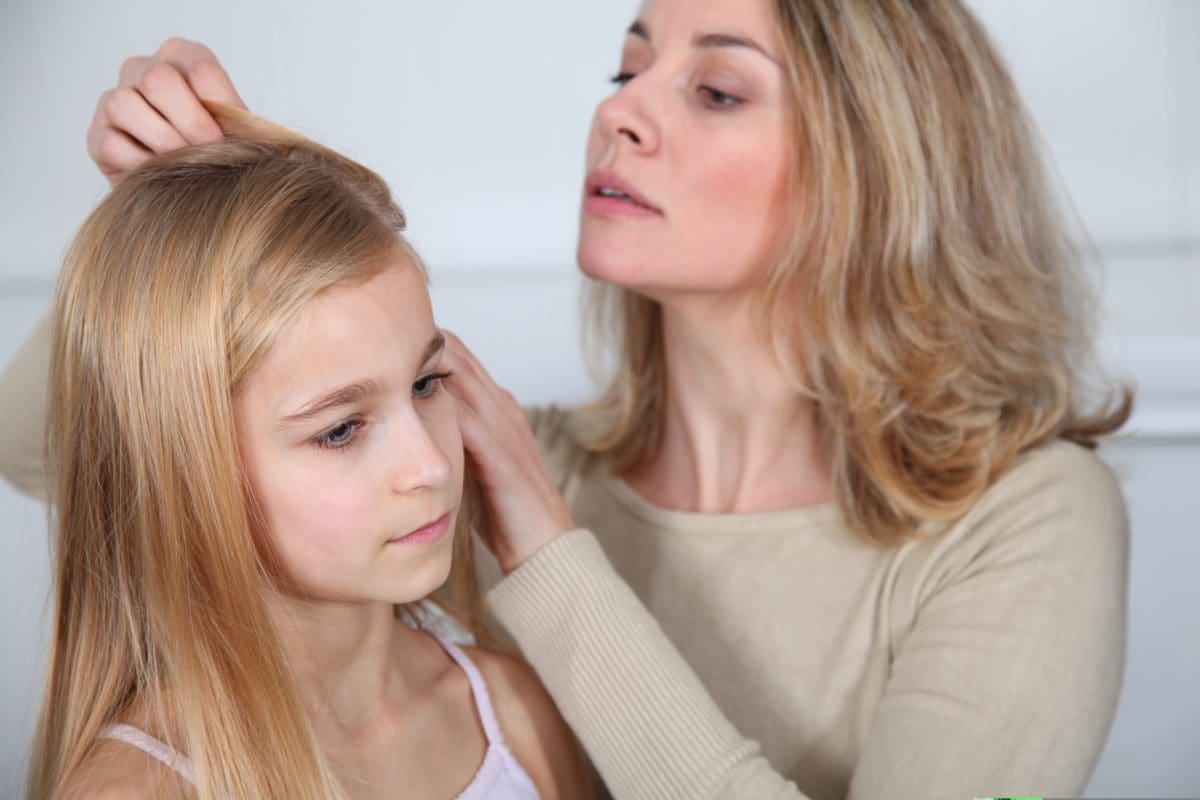What are head lice?
Head lice (Pediculus humanus capitis), also known as nits (which are actually the eggs of the lice), live, eat and breed on the hair and skin of the human scalp. They are small, wingless insects, about 2.5 to 3.5 mm in length. Head lice cannot jump or fly, but they can roam the scalp by moving from hair to hair with strong claws. Healthy head lice can be very difficult to see on the scalp as they move quickly when the hair is disturbed.
Female lice lay about 6 to 8 eggs every day. Eggs are laid close to their food supply — the scalp. The eggs (nits), which are small whitish flecks, are often seen behind the ears and towards the nape of the neck. They are attached firmly to the hair and are very hard to remove or slide along the hair shaft. This is in contrast to dandruff which is easy to slide along the hair shaft. Eggs hatch about 7 to 10 days after being laid.
How are they spread?
Because they cannot fly or jump, head lice must come in close contact with another person’s hair or head to spread. This can be done by sitting or lying next to a person with head lice, or using the same hairbrush, comb or hat. Head lice infestations occur most frequently in school children because they tend to be in close personal contact with each other and to share brushes and combs. Head lice are not associated with a lack of cleanliness (in fact, some believe that lice prefer clean hair).
Related Posts
Symptoms
Head lice may cause the scalp to itch, although often there are no symptoms. An active infestation of head lice is diagnosed by looking at the scalp and hair and either finding a live insect on the scalp or finding an egg (a nit) within 1.5 cm of the scalp (older eggs are found more than 1.5 cm from the scalp).
How to do the wet comb technique
To help detect head lice, you can use the wet comb technique. Simply apply any brand of regular hair conditioner to dry, untangled (brushed) hair. This stuns the lice for about 20 minutes. Then comb the conditioner through to the ends of the hair using a fine-toothed lice comb. Wipe the combings onto a tissue; inspect the tissue for lice and eggs as you go (live eggs will ‘pop’ when squeezed between the fingernails). If any lice or live eggs are present you need to treat the infestation as described below.
How to treat nits
If you find lice or live nits in the hair or in the combings after using the wet comb technique, you will need to treat the infestation.
Some cases can be treated by wet combing every day for 10-14 days until no lice are found, but this method has only about a 40 per cent success rate.
Alternatively, a special shampoo or lotion can be used. Speak to your pharmacist for advice about which treatment to use. Follow the directions on the package carefully using a clock to time how long the treatment should be left on. Unfortunately there is a high degree of resistance to many of the available lice treatments. Do not be tempted to use kerosene, insecticides or methylated spirits. Many treatments can irritate the scalp. While it does have antiseptic properties, there is no clear evidence that tea tree oil is an effective treatment for lice.
The shampoo or lotion will need to be applied twice. This is because no head lice treatment kills the eggs as well as the lice. Treatment is generally repeated after 7 to 10 days to kill the newly hatched lice from eggs that have survived the first application. Wet combing should be performed twice in between applications to remove any eggs, and a day after the second application to check the effectiveness of the treatment.
How many times will I have to use a head lice treatment?
If the lice are resistant to a particular shampoo or lotion, the treatment will need to be repeated with a different formulation. If several have failed you may need to fall back on the time-consuming comb and conditioner method.
Nits and lice may be found on items that the affected person has been using, such as bedding. They can be removed by machine washing and drying on the hottest setting. You can treat combs and brushes by soaking them for at least 5 minutes in hot water (more than 55 degrees Celsius).
An alternative to washing in hot water is to carefully seal contaminated items in plastic bags for about 14 days, which kills the lice because they are separated from their food source.
Check for head lice on the scalps of family members and close contacts. Only treat if an active infestation is found — there’s no need to treat everyone who has been in contact with the person who has had head lice.





